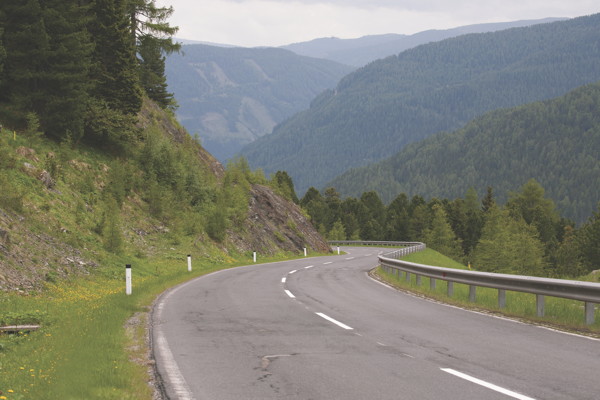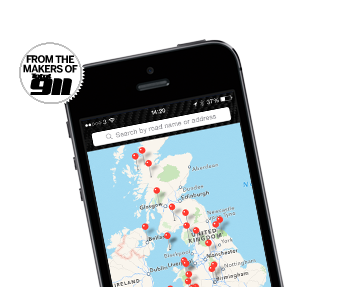B95, Nockberge, Austria
This Great Road was first published in issue 79 of Total 911.
Have you ever drawn up a list of the things that you want to do in your life? Even if you’re not into lists, and you’re just an ordinary Porsche enthusiast, then the names of Turracher Höhe and Gmünd should be well known to you. Those who know their Porsche history will remember that the town of Gmünd was the birthplace of Porsche cars, but getting to that beautiful mountainous town requires a pioneering spirit and a good, fast and sure-footed sports car – preferably a 911.
One route to Gmünd would be to start at the gorgeous Hotel Schloss Velden, which lies on the shores of Lake Wörther in the town of Velden. Heading out of Velden on the B95 will take you towards Patergassen where signs will direct you right on the B95 towards Turrach. This is where the history lesson begins, as the Audi quattro first made a name for itself up this formidable pass in January 1978.
Before the board of directors of Audi AG, the quattro prototype made its way up this snow-covered alpine pass wearing nothing but normal summer road tyres. The brainchild of Dr Ferdinand Piëch, the all-wheel-drive Audi 80 featuring a slightly lengthened wheelbase, made its way up the 23 per cent gradient without so much as breaking a sweat. Thus was born the quattro phenomenon and the rest, as they say, is history.
At the top of the climb, you pass through the beautiful town of Turrach, and then wind down the other side of the mountain, shadowing the fast-flowing but picturesque mountain river. Staying with the B95, you take a left at Predlitz, feeding you into a typical alpine valley floor with mountains on either side. You leave the B95 briefly and join the L225, which leads through the towns of Sankt Margarethen im Lungau and Sankt Michael im Lungau.
Woodland industries abound in this beautiful region but pay attention, because the pretty town of Gmünd will appear suddenly before you, and equally as suddenly, the entrance to the Gmünd Porsche Museum.
Early design and development of Porsche’s new 356 was moved from Stuttgart to the mountainous region of Carinthia in the summer of 1944 in an effort to escape the continuous attention of Allied bombers. A sawmill in Gmünd offered sufficient protection and so production of the 356 was able to continue until Porsche’s move back to Stuttgart in 1950.
Length of drive: 240km (150 miles) Points of interest: Turracher Höhe – alpine pass; Turrach – alpine walks, skiing, sightseeing; Gmünd – Porsche Museum www.auto-museum.at. Food and accommodation: Schloss Velden, tel: +43 4274 52888; Schlosshotel Seewirt, Turracher Höhe, tel: +43 4275 8234; Romantik Hotel, Goldener Stern, Gmünd, tel: +43 54 545 2852
Although the museum is not located in the original building, it is not far from the old sawmill and is created in the spirit of the earlier facility. The owner of the museum, Helmut Pfeifhofer, has worked hard to re-create the atmosphere of those early days and co-operates closely with the factory’s own museum in Stuttgart, ensuring that the exhibition is constantly being updated and refreshed.
If you started your journey in Velden, as mentioned, you would have headed roughly north-east for about 25km, branched right and followed a round route (approx 190 miles) which would bring you back to the point where you had initially branched right, and then back down the B95 to Velden. The total journey, in the rough shape of a tennis racket, up the handle, round the head of the racket and back down the handle again, is 240km (150 miles).
If you fly to Austria, the airport to use is Klagenfurt, leaving a short 28km journey to Velden. The roads are well marked with good surfaces and this route, which takes in Turracher Höhe and Gmünd, will not only be memorable, but also enlightening.
More from Total 911

SharkWerks’ TechArt 991 Carrera S in Total 911 now

Test drives successfully concluded for 991 RSR

Thought of the day: Porsche’s great engine room achievers




Comments (0)